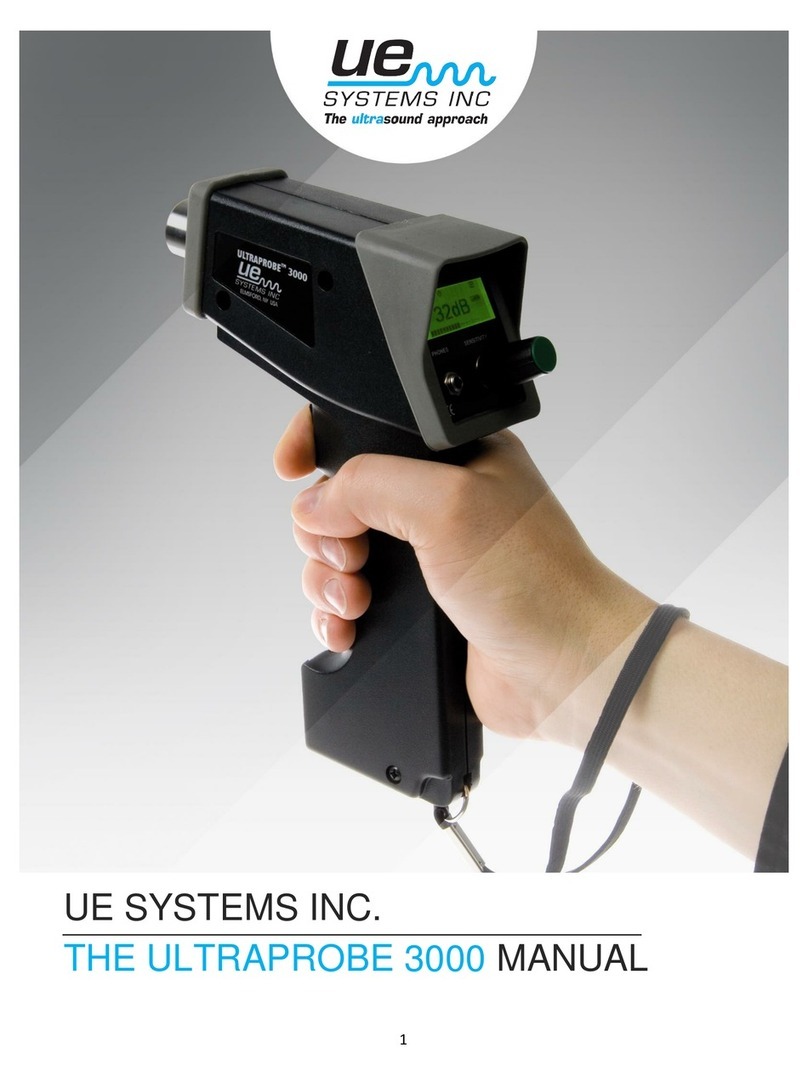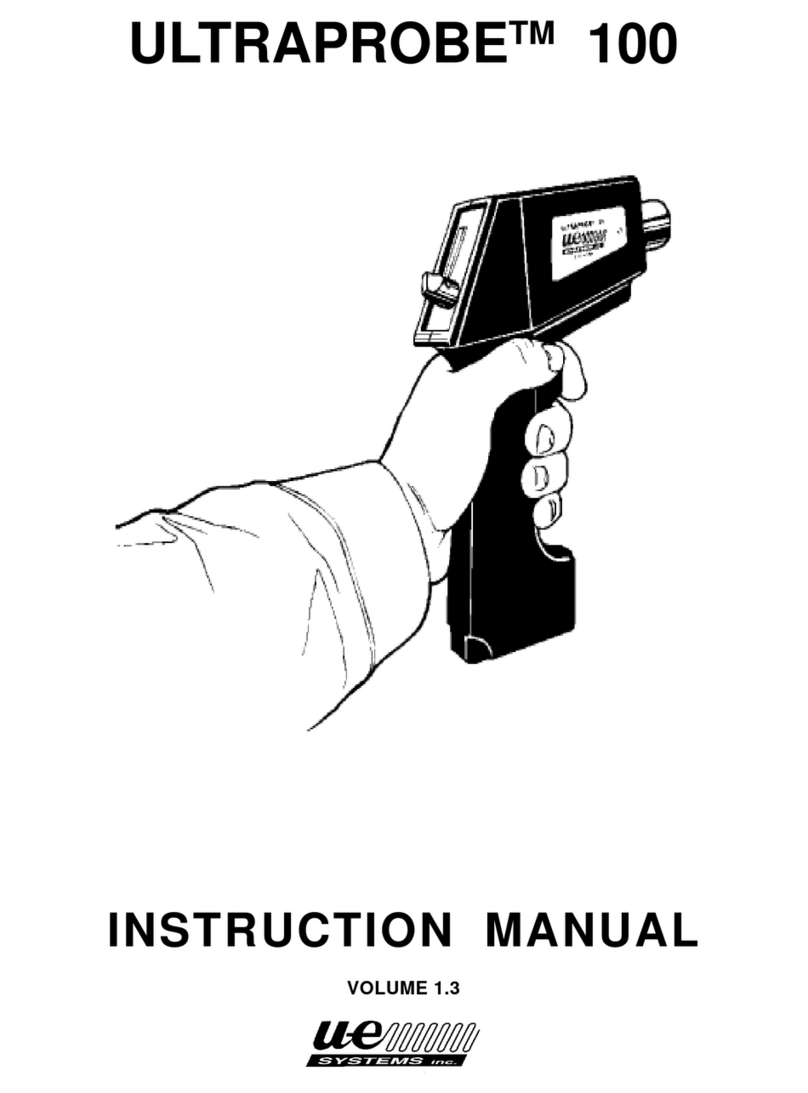Version 1 3
Ultraprobe 2000 Kit .........................................................................................................................................5
Components.....................................................................................................................................................6
Metered Pistol Housing ...............................................................................................................................6
Analog Meter (A) .........................................................................................................................................6
Battery Level (B)...........................................................................................................................................6
Sensitivity Dial (C) ........................................................................................................................................6
Headset Jack (D)...........................................................................................................................................6
Trigger Switch (E) .........................................................................................................................................7
Frequency Adjust Dial (F).............................................................................................................................7
Meter Selection Dial (G)...............................................................................................................................7
Recharge Jack...............................................................................................................................................7
When to recharge........................................................................................................................................7
Trisonic™ Scanning Module.........................................................................................................................8
Rubber Focusing Probe................................................................................................................................8
Contact (Stethoscope)Module.....................................................................................................................9
Stethoscope Extension Kit ...........................................................................................................................9
Headset......................................................................................................................................................10
WTG - 1 Warble Tone Generator (Standard).............................................................................................10
To use the WARBLE TONE GENERATOR:....................................................................................................10
To charge the Warble Tone Generator......................................................................................................10
WTG-2SP Warble Pipetone Generator ......................................................................................................11
Ultraprobe Applications.................................................................................................................................12
Leak Detection ...........................................................................................................................................12
How to locate leaks....................................................................................................................................13
To Confirm a Leak ......................................................................................................................................13
Overcoming Difficulties..............................................................................................................................13
Shielding Techniques .................................................................................................................................14
Low Level Leaks..........................................................................................................................................15
Electric Arc, Corona, Tracking Detection .......................................................................................................16
Monitoring Bearing Wear ..........................................................................................................................17
Detecting Bearing Failure ..........................................................................................................................18
For Comparative Test.................................................................................................................................18
Procedure for Bearing History (Historical).................................................................................................18
Simple Method ..........................................................................................................................................18
Attenuator Transfer Curve.........................................................................................................................19






























